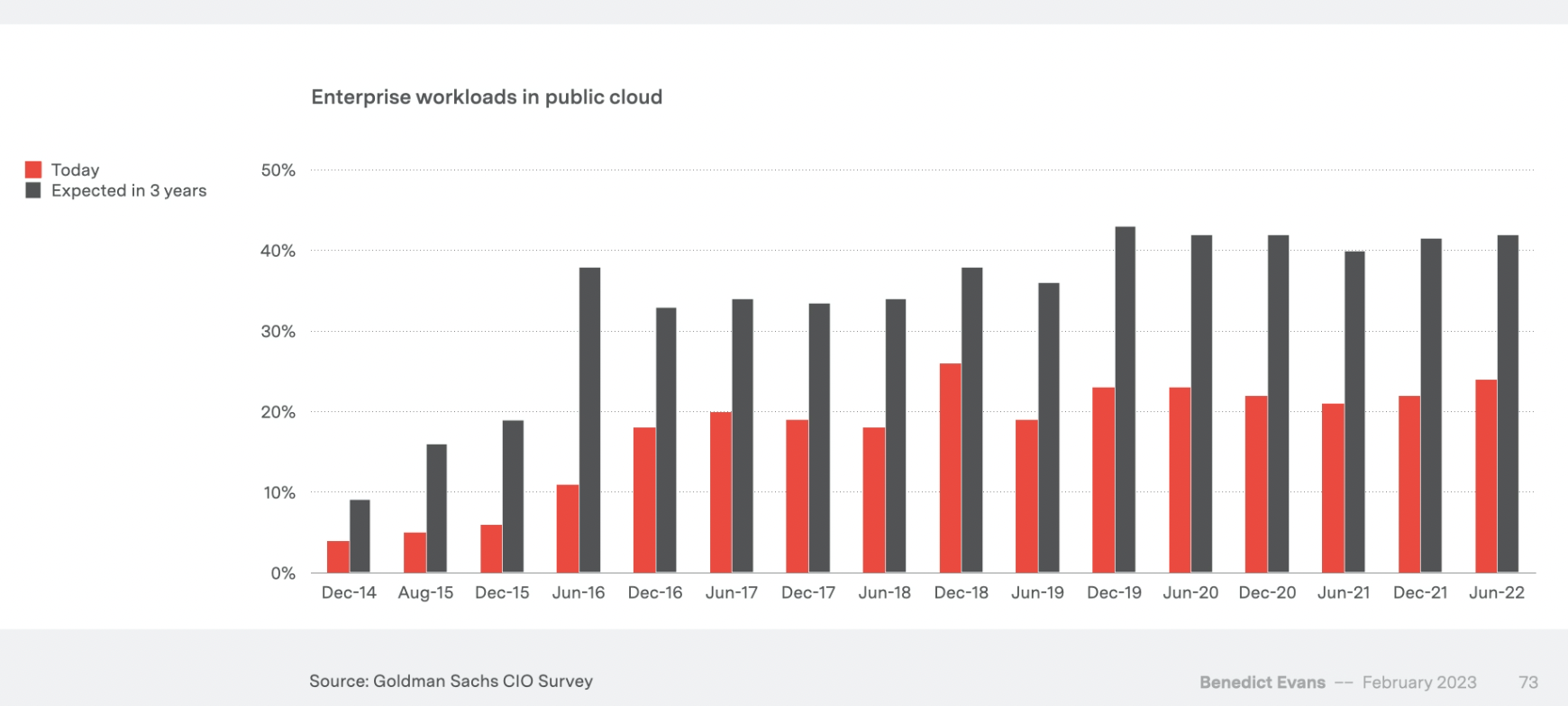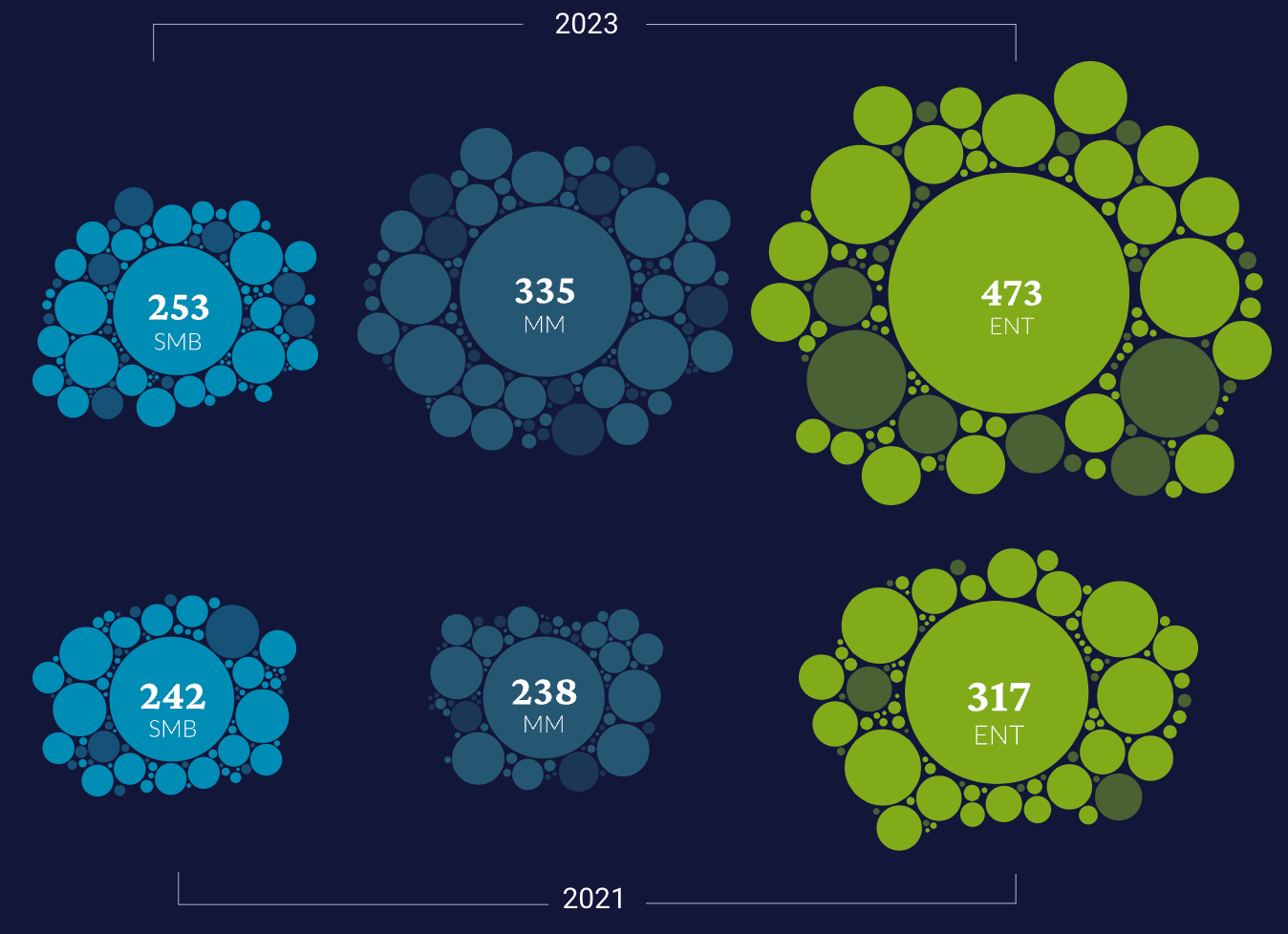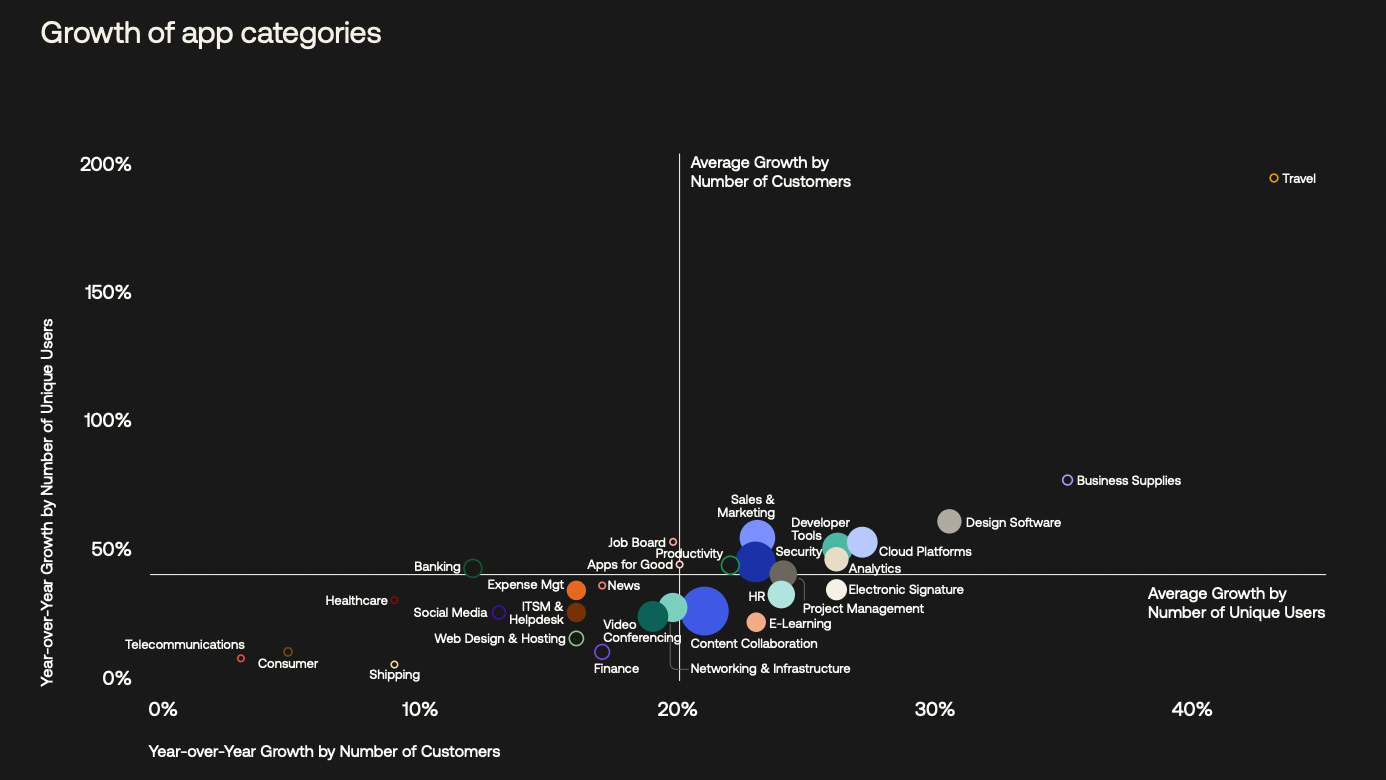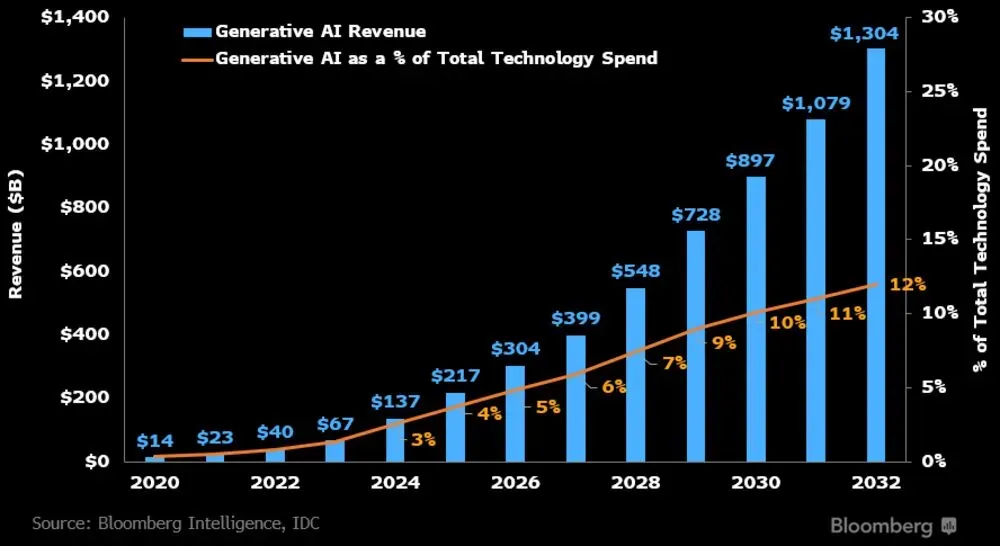Sitting at the Intersection of Multiple Tech Trends
Multiple tech trends are creating the optimal conditions for another massive shift in how we build and consume software products.

We know that the Earth is in constant motion, but, we don’t feel the tectonic plates shifting underneath our feet, in fact, we often don’t even think about it.
Most of the time, technological innovation is the same: it’s subtle, compounding over months and years into more obvious changes so that when we look back we see how far we’ve come. It’s a new programming language that allows you to create more interactive websites (Javascript), a new type of database that is best suited for scalable applications (NoSQL databases), etc.
However, there are sometimes such sudden and revolutionary innovations that it’s akin to a 7.8 magnitude earthquake and you cannot help but take notice: the advent of the internet, the rise of mobile, the emergence of cloud computing, the advancements in generative AI…
Each one of these revolutionary shifts brought a large-scale transformation of software: a whole host of new applications, changes in the way we work, and success for new companies.
We’re currently living through another seismic shift in technology: a result of multiple trends (some smaller and some gigantic) which are creating the optimal conditions for another massive shift in how we build software products.
Tech trends to keep an eye on
As a quick disclaimer: these trends didn’t happen linearly or in a vacuum: they are tightly interconnected and overlapping. There are also many other ongoing trends that influence the current tech landscape (you can deepen your research starting with this Gartner article). Still, we wanted to focus on those that impact developer tools the most.
Move to the cloud
We’ve been hearing for a couple of decades that moving to the cloud will enable companies to become data-driven, increase organizational agility, speed innovation, accelerate time to value, reduce infrastructure costs, etc. and because of this you might assume that most organizations have completed - or are finalizing - this migration.
The truth is that at least one-third of enterprise workloads are not in the cloud right now. Innovation takes time and while it may seem that this topic has been talked to death, the reality is that many enterprises are still in the process of migrating to the cloud.
In 2023, becoming a data-driven organization remains one of the top strategic goals of many companies: 41.4% of cloud leaders say they are increasing their use of cloud-based services and products, 33.4% are planning to migrate from legacy enterprise software to cloud-based tools, and 32.8% are migrating on-premises workloads to the cloud.

Adoption of SaaS
The migration to the cloud helped fuel the explosion of software-as-a-service (SaaS): 20 years ago, the majority of software was “built in-house” with large monolithic deployments. However, with the ability to leverage cloud infrastructure, data becoming the most prized resource in a business (“Data is the new oil”), and the requirement for more scalable, available, resilient, etc. applications, there was a shift towards “assembly software”.
Particularly in the Enterprise world this continues to be a significant trend: the SaaS sprawl within organizations continues to grow despite tighter budgets and staffing reductions, increasing by 32% between 2021 and 2023.
Gartner predicts that global public cloud spending will reach over $600 billion this year. Even just an overview of the most popular 1000+ technologies reaches an overall market cap of $21.1T and funding of $66.7B.

Shift toward distributed systems
In concert with the above trends, the past decades have seen a shift in consumer requirements: users want to have mobile-first, low-latency, and highly available applications.
More and more companies are migrating from traditional centralized systems to distributed application environments because of the significant advantages of improved performance, scalability, and fault tolerance.
In turn, this means that the complexity of systems in terms of ‘layers of software’, architecture patterns, and the number of tools needed to manage them continues to increase.
And as our software becomes distributed, we need a distributed workforce to design, develop, and manage it.
… which has driven the creation of distributed teams … which the global COVID pandemic only exacerbated, making software teams more spread out than ever (yes, the trend toward distributed teams had started even before the pandemic!).
Multiplayer collaboration
A platform that harmonizes communication and collaboration for teams, especially for those that aren’t physically together all the time, brings undeniable cost, time, and effort savings.
There have been many attempts to coin a term to describe this trend besides “multiplayer collaboration”, including: “real-time collaborative tech”, “deep collaboration”, and “collaborative enterprise”.
For that reason, it’s worth clarifying when we consider an application to be “multiplayer” (lowercase “m” 😉).
It needs to have:
(1) real-time synchronous communication and collaboration through a common interface,
(2) live playback of the collaborators’ edits,
(3) data integrity and prevention of conflicts, and
(4) status updates for all team members.
Ultimately, this trend is due to the tech industry recognizing that: (a) as humans, we’re collaborative beings and work best with collaborative visual tools, and (b) having separate tools for communication and for ‘doing things’ is not effective.
Think of assembling an IKEA cabinet with your partner in the living room. If that’s not stressful enough, you can communicate with them only when you’re both in a different room of the house - say the kitchen. You have to wait for them to join you in the kitchen, only then exchange information (”Pass the screwdriver”, “I’ll start on that section”, “I broke the small L-shaped wrench”), and finally go back to your half-assembled cabinet in the living room to continue working.
Now imagine doing that while assembling hundreds of components, asynchronously and with multiple rooms where you share specific types of information. That’s the current experience of backend developers building a large-scale distributed architecture, with numerous components, interactions, and dependencies.
In our deep dive from single- to multiplayer tooling, we looked at the factors that led to the rise in this tech trend from shifts in technology, to changes in user behavior, and to its ability to drive bottoms-up adoption.
Browser-based applications
Besides the multi-decade global shift from physical to digital spaces, collaboration is becoming more and more “browser-based”. Just think of the top-performing apps in 2022 (Figma, Sentry, Miro, Hubspot, Asana, Github, Zoom, etc.) or all the software startups that raised significant venture capital funding in the past few years.
The idea of working on a local copy of Word and sending the “final-final-v3” file to your co-worker to review, is as outdated as the idea of needing floppy disks to install new software.
Continuous technology innovations like WebRTC and WebGL make this possible, allowing applications rich in audio, video, and collaborative graphics. (source →)

Advancements in generative AI
Perhaps the most compelling trend powering tech innovation in the 2020s is artificial intelligence. While many of the prior advancements in AI were striking and exciting (just think of AlexNet, CNNs, RNNs, GANs, etc) this time is different for a few reasons: the speed of innovation, the availability of infrastructure-centric companies providing much-needed tools to the AI industry, and clear application use cases without strong incumbents. (source → )
Not to mention the fact that we’ll continue to see the cost to train models and inference going down, driven by GPU prices and the efficiency of algorithms.
“We predict that in 2023, AI adoption within enterprises will continue to expand and be more creative, trustworthy, and optimized”. Forrester Predictions 2023

Sitting at the intersection
Those companies that sit at the intersection of these tech trends are well-positioned to leverage the current seismic shift and build products that will transform how we work — or, at the very least, they present an undeniably more attractive business model to investors!
Particularly if their product doesn’t have direct competition from incumbents (or if there is only a weak, partial overlap) and …
- They address a specific use case in the distributed systems field
- They package their technology in a complete SaaS product suitable for Enterprises (especially those interested in taming the SaaS sprawl and optimizing costs and overhead)
- They are purpose-built for web-browser multiplayer collaboration of distributed teams
- They leverage generative AI to address highly repetitive tasks (even if a human is required in the loop to review and optimize the final output)
There is a reason why there are currently over 335 generative AI startups out there and over half are Series A or earlier - it’s an early-stage space with lots of potential. We’re sitting at the center of a perfect storm to bring innovation in dev tools and we’ll see more and more new tools be launched in the coming years to do just that.
Multiplayer is one of those tools: we enable all the companies that rely on complex and multilayered distributed systems to visualize, design, develop, and manage them from a single interface, facilitating real-time team collaboration and communication among distributed teams (akin to Figma but for the back end).
You can save overhead and keep your team lean with our AI Assist functionality, which generates everything teams need for distributed software, including system architectures, APIs, service implementations, Infrastructure as Code (IaC), documentation, and more.
Sign up for free to try Multiplayer!
